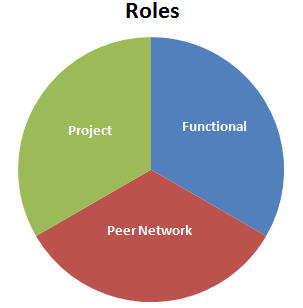“Training for Good”
There’s a lot of focus in the L&D world on corporate applications of training or...
Read More[tweetmeme source=sparkandco only_single=false <a href=”https://www.URL.com”>https://www.URL.com</a>]
I attended a webinar a couple of weeks ago, by Future of Talent Institute and Verna Allee was the speaker. She talked about value network analysis, and one thing that really struck me was roles – going beyond the “org chart” to see how people worked and added value. Maybe it was the special spot I hold for the number 3, or maybe it was the applicability of the idea to my consulting work, but I liked this concept.
Many of my clients are trying to figure out how to assess, develop or retain their talented employees. There was a lull during the recession where organizations could sit back smugly and think: “those schmucks should just be glad to have a job, so I don’t really have to worry about providing anything beyond your basic pay. Heck, I might even be able to wring a bit more work out of them if they are afraid they won’t have a job”.
Today, well not as much.
Verna said, in organizations, many of us hold not one but three roles:

Each of these roles might require a different set of skills (technical and non-technical), and you may develop different strategies to attract, develop, retain or redeploy employees (contingent and FTE) for the role.
For learning professionals, it is a component of our audience analysis, and maybe it refines the design of the instructional experience or learning environment that will best produce results in terms of learning and behaviour change. Certainly from a “employee development” perspective, this might help employees grow in terms of depth and breadth, increasing their organizational versatility.
In terms of “talent management” – organizations will need to consider how the three of these types of roles comprise their overall talent programs. For someone to be considered “top tier” do they need to excel at one, two or all three of these roles? For business leadership, do they need to have project experience or is functional enough? The kicker for many organizations is – how do you know all this? How can you capture and analyze it well enough to inform you about your strategy, program design, vulnerabilities, skills…
We can’t just insert an RFID into each employee and track ’em, but I think Dan is right about his enterprise 2.0 musings – we need to take a multi-faceted approach. Plus, his concept is written in 3’s as well, so I’m in good company.